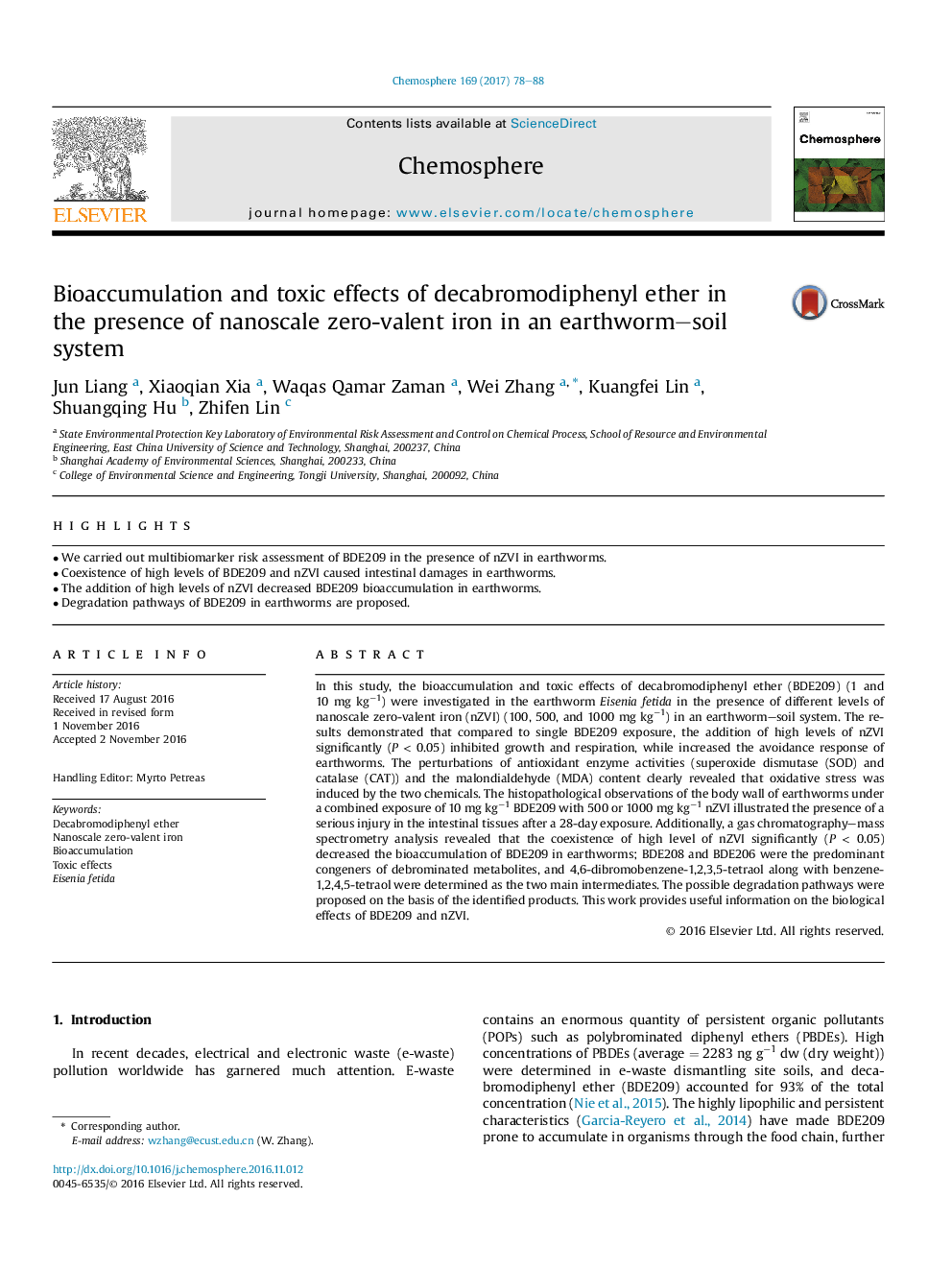| Article ID | Journal | Published Year | Pages | File Type |
|---|---|---|---|---|
| 5746975 | Chemosphere | 2017 | 11 Pages |
Abstract
In this study, the bioaccumulation and toxic effects of decabromodiphenyl ether (BDE209) (1 and 10 mg kgâ1) were investigated in the earthworm Eisenia fetida in the presence of different levels of nanoscale zero-valent iron (nZVI) (100, 500, and 1000 mg kgâ1) in an earthworm-soil system. The results demonstrated that compared to single BDE209 exposure, the addition of high levels of nZVI significantly (P < 0.05) inhibited growth and respiration, while increased the avoidance response of earthworms. The perturbations of antioxidant enzyme activities (superoxide dismutase (SOD) and catalase (CAT)) and the malondialdehyde (MDA) content clearly revealed that oxidative stress was induced by the two chemicals. The histopathological observations of the body wall of earthworms under a combined exposure of 10 mg kgâ1 BDE209 with 500 or 1000 mg kgâ1 nZVI illustrated the presence of a serious injury in the intestinal tissues after a 28-day exposure. Additionally, a gas chromatography-mass spectrometry analysis revealed that the coexistence of high level of nZVI significantly (P < 0.05) decreased the bioaccumulation of BDE209 in earthworms; BDE208 and BDE206 were the predominant congeners of debrominated metabolites, and 4,6-dibromobenzene-1,2,3,5-tetraol along with benzene-1,2,4,5-tetraol were determined as the two main intermediates. The possible degradation pathways were proposed on the basis of the identified products. This work provides useful information on the biological effects of BDE209 and nZVI.
Keywords
Related Topics
Life Sciences
Environmental Science
Environmental Chemistry
Authors
Jun Liang, Xiaoqian Xia, Waqas Qamar Zaman, Wei Zhang, Kuangfei Lin, Shuangqing Hu, Zhifen Lin,
